Garmin Forerunner 255 vs. Fitbit Sense
Running up that hill.
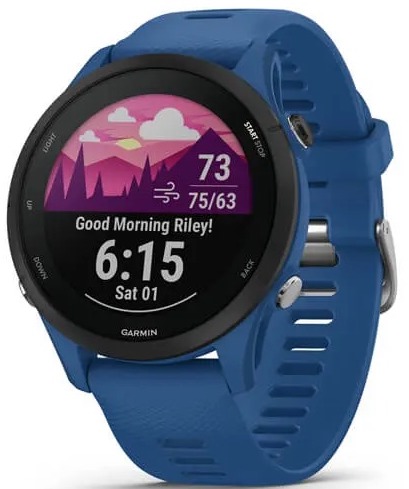
A runner’s dream
If you’re a runner, especially one who is training for a marathon or other type of race, the Garmin Forerunner 255 is a solid option that will serve as a coach on your wrist, helping you track progress, improve, and manage all your training.
Pros
- Amazing features for runners
- Adaptive training plans via Garmin Coach
- Lots of other workout options
- Advanced GPS (GNSS)
- Generous battery life
Cons
- Not an ideal option if you don't run
- Expensive
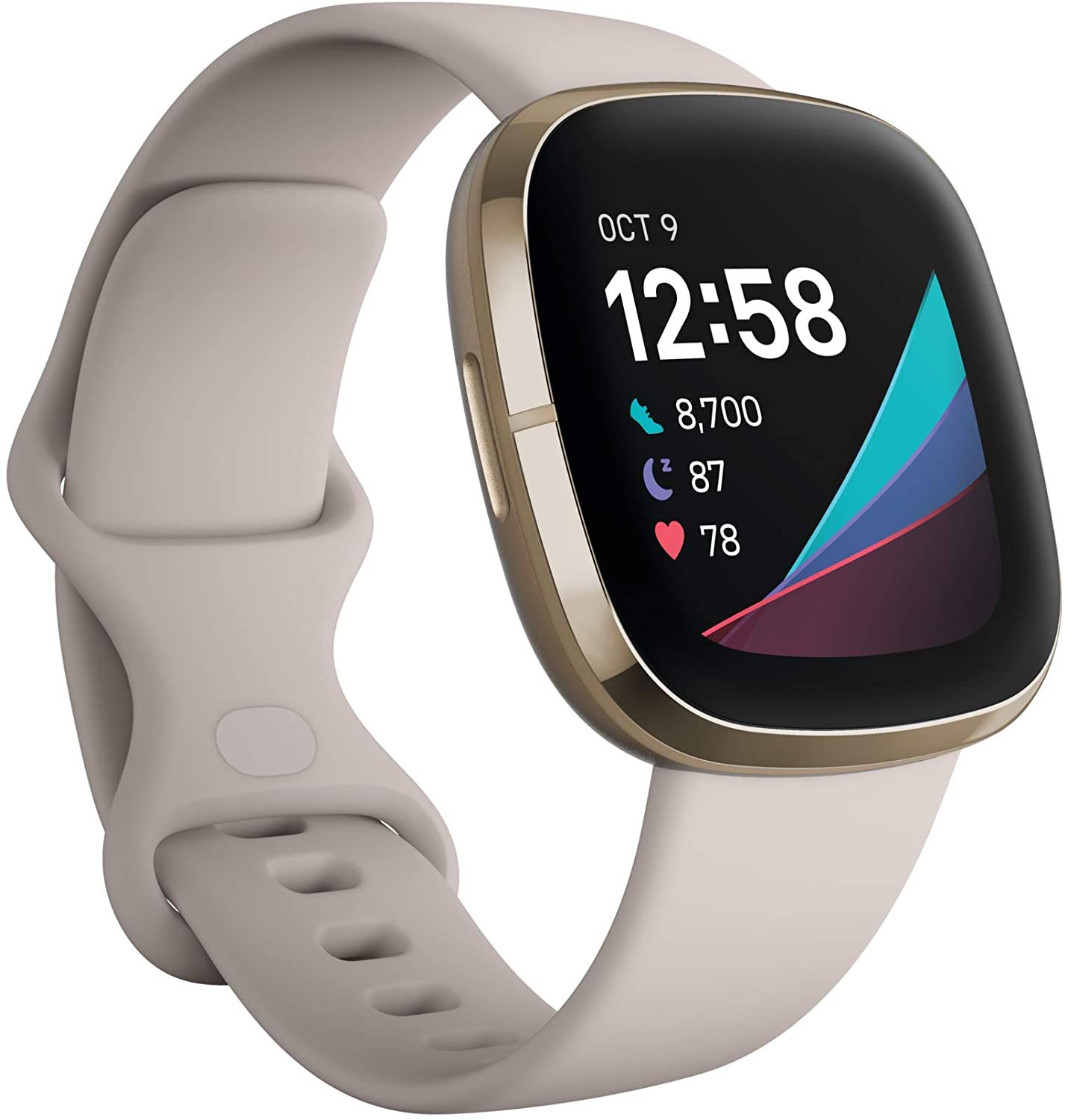
An all-around smartwatch
For all-around tracking of your health, wellness, and fitness, the Fitbit Sense is still a solid option, though it’s an older model released way back in 2020. But if you can find one for a deal, it’s worth investing, and with Fitbit Premium, you get a total workout and health companion.
Pros
- Square face is preferred by some
- Tons of supplementary content in app
- Voice control features built-in
- Plenty of sensors for ECG, EDA, and more
- Fabulous sleep tracking
Cons
- Need Fitbit Premium to realize all the benefits
- Older, outdated model that may soon be replaced
- Battery life isn't great
When it comes to models that help you track your workouts, health, and wellness, Garmin and Fitbit are often at the top of the list when it comes to choosing one. Specifically, when looking at the Garmin Forerunner 255 vs. Fitbit Sense, you might find that they both offer similar features and seem to be solid options.
But which one should you get? That depends on a number of factors, and we’re here to help break that down for you to help you choose.
Garmin Forerunner 255 vs. Fitbit Sense: Look, fit, and feel
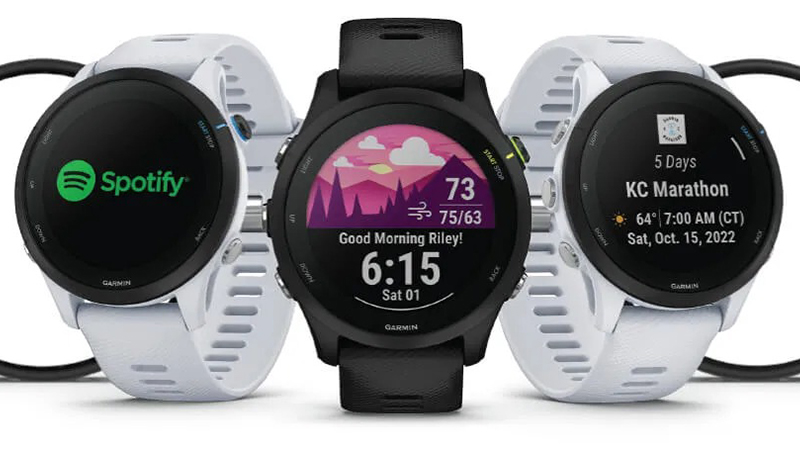
The first most obvious difference between these two smartwatches is how they look.
The Garmin Forerunner 255, a newer model just introduced in summer 2022, has a round watch face that will remind you of a traditional wristwatch. The 46mm band comes in tidal blue, light pink, or powder gray, while both sizes (as well as the music variants) come in black. The music variants of the 41mm band are also available in whitestone. With a silicone band and Corning Gorilla Glass 3 face, it has a side button for navigating menus, and a 1.1-inch, 218 x 218 screen.
You can download different watch faces, apps, and widgets from the Garmin IQ store to further personalize the look. It’s also waterproof with a 5ATM rating, and boasts a 12-day battery life, though this drops to 26 hours when using the built-in GPS, or 5.5 hours if you use the advanced GNSS as well as music (20 hours without music).
This might seem like very little, but assuming you use this once per day for an hour run, you can expect to have to charge every few days. For serious runners, then, you likely won’t see the generous 12-day battery life unless you’re wearing it while you aren’t training.

By comparison, the Fitbit Sense, an older model smartwatch that released back in September 2020, has a square face reminiscent of the Apple Watch. The 1.59-inch AMOLED screen is slightly larger, though this means it’s also larger on your wrist. But it’s also higher resolution at 336x336 pixels, so you’ll get a really enjoyable view.
Get the latest news from Android Central, your trusted companion in the world of Android
It has one side button, but it’s an inductive one, so doesn’t require you to actually press or rotate it, which also means it doesn’t add any protruding pieces. With that said, some might find it finicky.
Comfortable to wear with the silicone straps, and rugged thanks to the Corning Gorilla Glass 3 screen, it comes in carbon/graphite stainless or lunar white/soft gold colors.
Battery life is only six+ days, but you have the option to fast charge for 12 minutes to get an extra day of use, perfect if you’re about to head out to an event and don’t want to miss out on all those valuable steps. Either way, expect to charge it at least once or twice weekly.
There’s an option to download different watch faces for this one as well through the Fitbit app, including official ones, as well as custom ones that might highlight the specific stats you want to see. There are also simple fun designs, like using your Bitmoji character. You can also save your five favorites to seamlessly swap among them.
Thus, when it comes to looks, the decision might come down to whether you’re on team square or team round, and whether you prefer predominantly using your finger to navigate the screen or prefer a physical button.
Garmin Forerunner 255 vs. Fitbit Sense: Let’s break down the specs
Before getting into the fitness features and other niceties, let’s take a look at how these watches compare by the raw specs.
| Header Cell - Column 0 | Garmin Forerunner 255 | Fitbit Sense |
|---|---|---|
| Compatibility | Android, iOS | Android, iOS |
| Colors | Tidal Blue, Light Pink, Powder Gray, Black, Whitestone | Carbon/Graphite Stainless, Lunar White/Soft Gold |
| Swappable Band | Yes | Yes |
| Battery Life | Up to 12 days (26 hours w/GPS, 5.5 hours w/GNSS + music, 20 hours with GNSS) | 6+ Days (12 hours w/GPS) |
| App | Garmin Connect | Fitbit |
| Heart Rate Monitoring | Yes | Yes |
| Stress Tracking | Yes | Yes |
| GPS | Built-in + GNSS | Built-in |
| Mindful Breathing | Yes | Yes |
| Sleep Monitoring | Yes | Yes |
| Swimproof | 5ATM | 5ATM |
| Phone Notifications | Yes | Yes |
| Pulse OX Sensor | Yes | Yes |
| Mobile Pay | Garmin Pay | Fitbit Pay |
| Screen Size | 1.1 inches | 1.58 inches |
| Screen Type | Sunlight-visible, transreflective MIP | AMOLED |
These two smartwatches have pretty much every feature under the sun, but it’s when you dig deeper that the differences are really highlighted.
Garmin Forerunner 255 vs. Fitbit Sense: Sports and activities

Right off the bat, it’s worth noting that the Garmin Forerunner 255 is a runner’s watch. Part of Garmin’s Forerunner line was designed specifically for runners, so many of the sports and fitness related features in the watch pertain to running. If you aren’t a runner, and you’re not planning to focus on the activity, you’ll want to look at another option, as you’ll be paying for features you simply won’t use.
If you are a runner, the Garmin Forerunner 255 is a solid option worth considering, and ranks as one of the best running watches. It comes with built-in triathlon features and, for races and brick workouts (a full bike followed by a run), a single button can easily transition from one activity to the next.
Through Garmin Coach, you’ll get adaptive training plans for popular run types like 5K, 10K, half marathon, and more, with guidance from expert coaches. After each run, you’ll receive a personalized daily suggested workout to match your performance and recovery. This is in addition to training tips, and even completion time predictions based on the course details, weather, and your performance. Use the race widget to plan workouts and course details.
In addition to the built-in, running-focused profiles for triathlon and duathlon, there are others like swim runs, or you can create your own custom multisport profile. Indeed, while this is a runner’s watch, you can track other exercises as well, including everything from HIIT to strength, cardio, yoga, pilates, and more.
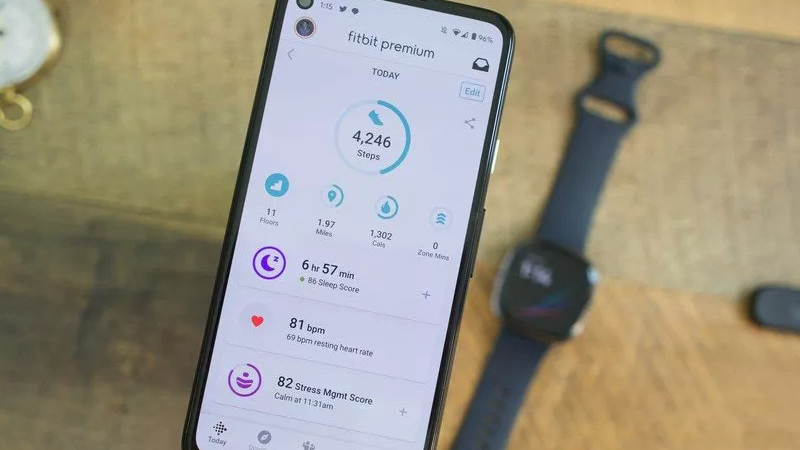
The Fitbit Sense can be used for tracking runs as well, but it’s a basic run tracker with built-in GPS to track your location and route, without any additional run-specific workouts. You can track all types of exercises, though, from strength training to yoga, pilates, HIIT, cardio, walking, swimming, and more.
In total, there are 20+ goal-bases exercises with a SmartTrack feature that can automatically detect when you begin an activity like walking, running, or swimming, and start tracking it for you if you forget to manually set the watch to do so.
Because of the large screen, you can follow animated workouts on your wrist, which is great if you’re trying to squeeze in a quick workout from a hotel room or in the corner of the gym while machines are being used for other patrons.
With a Fitbit Premium subscription, you can also access tons of workouts from your phone (casted to a big screen if desired), ranging from cardio to boxing, yoga to mindfulness and breathing exercises.
Bottom line: if you’re looking for an all-around smartwatch that can track workouts or basic daily activity, go with the Fitbit Sense. You can also add Fitbit Premium for a monthly or annual fee if you want to get really serious about your health. If you’re a serious runner, the better option is by far the Garmin Forerunner 255.
Garmin Forerunner 255 vs. Fitbit Sense: Workout feedback
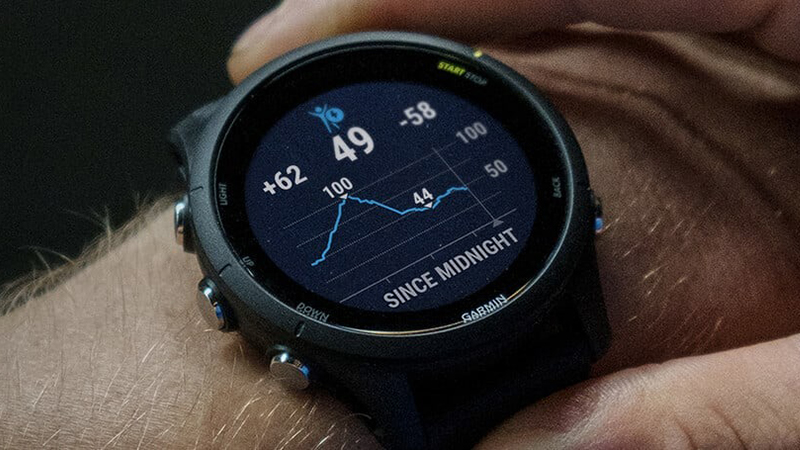
It isn’t just about what each smartwatch tracks when it comes to workouts, health, and wellness, though. It's also what feedback each watch provides from this data that can help you improve. And both do a great job, but in different ways.
With the Garmin Forerunner 255, a runner is going to want feedback on pacing. They'll want to look back at their route and be able to compare if they take the same route each day. The Garmin Forerunner 255 lets you do all of this. PacePro, for example, offers GPS-based pace guidance for a selected course or distance, so you can work on maintaining the right pace to reach your desired goal.
Training status will provide insight into the overall effort, including if the run was productive, peaking, or strained, while acute load compares the intensity to the optimal range to help you improve. Training effect, meanwhile, looks at how your workouts influence endurance, speed, and power.
You’ll also get useful information about recovery time based on stress, sleep, daily activities, and training, and an analysis of your heart rate and pace while you run. -Add a Running Dynamics Pod or HRM Pro monitor to get continuous measurements on your cadence, stride length, ground contact time, and even balance.
Thanks to the built-in GPS, which also includes advanced multi-band GNSS for even more accurate positioning, you can track your run then look back on the lap distance in meters. A visual race predictor will look at your running history over time, combined with your overall fitness level, to predict how long it will take you to complete a new route.
Speaking of which, the Garmin Connect app includes a section where you can both find courses in your area, or create your own custom ones; ideal if you’re traveling on vacation and want to know a good running route. You can also sync routes from third-party apps like Strava and Komoot.
Finally, Body Battery will look at your overall training, sleep, and other stats and let you know when you are ready to workout or when you should slow it down and take a rest day.
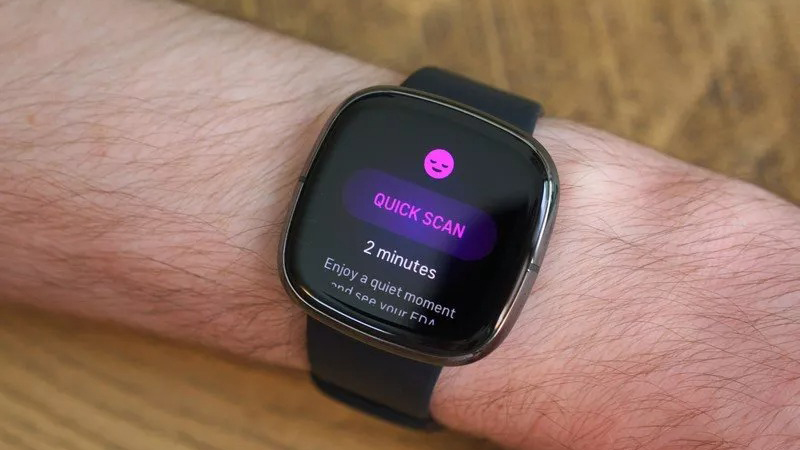
With the Fitbit Sense, you won’t get all of this nitty-gritty details with a run: you can simply initiate it, track your route using the built-in GPS, and look at the stats after. The stats, however, do include some useful information.
The first is something called Active Zone Minutes, which will advise not only how much time you spent below the target heart rate zones, in fat burn, cardio, and peak zones, but also when. This is useful for running, walking, and cycling, but also at-home workouts. Since it buzzes on your wrist each time you enter a new zone, you have a good indication if you need to kick things up a notch or slow down.
Naturally, the app also includes the usual features you’d find, including daily steps, floor climbs, calories burned, heart rate, and more, just as the Garmin Forerunner 255 does.
With a Fitbit Premium subscription, you can access things like detailed health reports that look at everything from breathing rate to heart rate, BMI, and more. So, for a holistic picture of your health, the Fitbit Sense is the better option. For a companion to training while running, the Garmin Forerunner will give you the data you need to get better.
Similar to Garmin’s Body Battery feature, Fitbit has a Readiness Score that will also track your stats and let you know how ready you are to work out. But, there’s a catch: you need to sign up for Fitbit Premium to access it.
Garmin Forerunner 255 vs. Fitbit Sense: Other sensors, features, and functions

You probably want to know about what else these two smartwatches can do. Indeed, they have some other useful features, and the Fitbit Sense might have a leg up on the Garmin Forerunner 255 in this department.
First, let’s start with the Garmin Forerunner 255. As noted, there are music variants that are a bit more expensive, but add the ability to download tunes to the watch itself, so you can play them back without a smartphone.
For gym rats who want to leave their phone in the locker, or runners who don’t want any extra bulk, this could be a game-changing option and worth the extra money. It comes with 4GB built-in memory, enough to store up to 500 songs from Spotify, Deezer, or Amazon Music.
You get smartphone notifications, of course, and you can also respond via Quick Replies with compatible Android devices. Sleep tracking is available including a detailed sleep score along with pulse OX, women’s health tracking, and stress tracking. A neat feature is a two-minute health snapshot that can analyze stats like your heart rate and breathing for two minutes to indicate how stressed you might be.
Another cool added feature in the Garmin Forerunner 255 is the assistance and incident detection using LiveTrack. Your watch can determine if there was a fall or other incident, and get in touch with your predefined contacts or even emergency services, and send your location data. It’s also worth noting it has Garmin Pay for contactless payments from your wrist as well.

Now, over to the Fitbit Sense. It has tons of sensors to monitor everything under the sun, from ECG when using the Fitbit ECG app, to stress, electrodermal response (EDA) to stress, providing you with a stress management score, Sp02, and even skin temperature. All of this is handled through biosensors on the underside of the face, which is what is also used for measuring heart rate and charging the battery.
Fitbit has always excelled when it comes to sleep monitoring, providing the most accurate sleep tracking of any smartwatch brand I have tried. You get not only a detailed analysis of time in light, deep, REM sleep, and sleep score (you get this with the Garmin Forerunner 255 as well), but also daily steps to improve. There’s also a smart wake feature, sleep mode, and snore and noise detection, along with female health tracking and Fitbit Pay.
While you can store and play Deezer or Pandora tunes from the watch, and control Spotify, the music playback and set-up process leaves something to be desired. You can, however, access built-in voice controls thanks to Google Assistant and Alexa built-in; a handy feature if you want a smartwatch that can keep up with your daily life beyond workouts.
You can set an alarm, check the weather, and even take Bluetooth calls right from your wrist, as well as compose quick replies with compatible Android phones. Naturally, you get all the usual smartphone notifications as well.
Garmin Forerunner 255 vs. Fitbit Sense: Which should you buy?
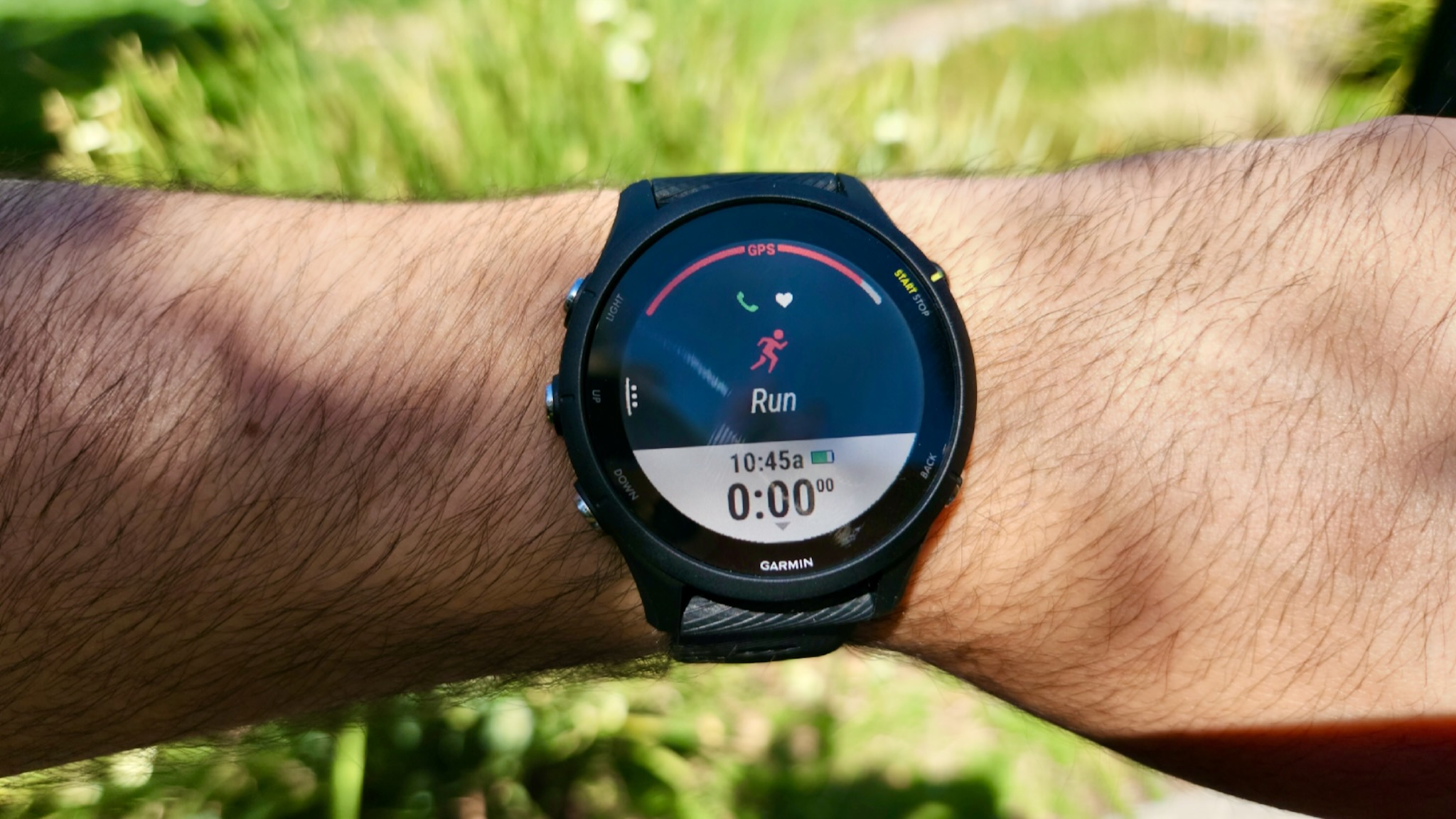
When looking at the Garmin Forerunner 255 vs. Fitbit Sense, the Garmin Forerunner 255 is the obvious choice if you’re a runner. You’ll get loads of useful features for tracking, analyzing, and working towards achieving your goals and improving your pace, endurance, and more.
For a smartwatch that focuses more on overall health, as well as keeping in touch throughout the day, the Fitbit Sense is a good option. While it’s a few years old, it’s still a solid smartwatch and one of the best Fitbit smartwatches. It’s also Fitbit’s most recent smartwatch, even though it’s coming up on two years old.
You can still track runs with the Fitbit Sense, and if running is just one part of your workout regimen, you might be fine with the basic tracking. But for serious guidance in that respect, the Garmin Forerunner 255 is the obvious choice. I wouldn’t, however, recommend it for basic activity and sports tracking beyond running, as you’ll be paying more for features you won’t get any use from.
Keep in mind, that with rumors of a Fitbit Sense 2 coming, you might want to wait it out and see what this upgraded version will have to offer. Among the potential updates including an actual physical side button and Google WearOS integration, both exciting enough to hold out a bit longer if you’re really set on a Fitbit smartwatch.

The best option for runners
If you’re a runner or plan to start training, the Garmin Forerunner 255 is the no-brainer option between the two. As part of Garmin’s growing line of smartwatches specifically designed for runners, you get tons of guidance, stats, and special features unique to running. From PacePro, to training effect, these features justify the higher price tag.

A decent health companion
For monitoring overall health and wellness, the Fitbit Sense is still a good option worth considering, especially if you find a really good deal. But with rumors of a Fitbit Sense 2 on the horizon, it might be best to wait unless you find a killer deal, and you're content not having the latest and greatest.

Christine Persaud has been writing about tech since long before the smartphone was even a "thing." When she isn't writing, she's working on her latest fitness program, binging a new TV series, tinkering with tech gadgets she's reviewing, or spending time with family and friends. A self-professed TV nerd, lover of red wine, and passionate home cook, she's immersed in tech in every facet of her life. Follow her at @christineTechCA.
